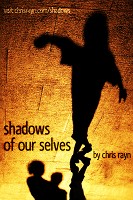Shadows of Our Selves: About the Project

"What is a life? A frenzy. What is life? / A shadow, an illusion, and a sham. / The greatest good is small; all life, it seems / Is just a dream, and even dreams are dreams." - Calderón de la Barca's Life is a Dream
As each day draws to a close, the sun nears the horizon, shadows grow longer, and the world of bright daylight disappears into darkness. People rush home, enjoy the last sunlight with their families, they smile, they scold, they wonder, they fear, they hope - and with them, their shadows, a lifelong companion. When reality is turned upside down, this shadow world comes to life.
In this surreal project, the shadows of people around us take the center stage, as the viewer (and the world) is turned around. In our shadows, individual features disappear, and we become archetypes of our roles and emotional states. But shadows also lie - they distort the truth hidden beneath. As such, shadows are like masks and faces, which people wear proudly in their everyday performances. All the world's a stage, and here, it is a shadow theater. If the subjective images we perceive of each other - the entire material world in fact - are like mere shadows, as Platon postulated in his Allegory of the Cave in Antiquity already, how would such a realm of walking shadows actually look like? It is like ours in many ways, yet it looks eeriely different and conceives us.By using shadows, this project reveals the unreliability and untruthfulness of the reality we perceive through our eyes, and, at the same time, its manipulation through photography, which is, after all, yet another subjective reflection, or projection, of the truth. Seeing people deformed into "ghosts" or "extraterrestrial entities" even makes us feel alienated, literally, from these real humans beings - which are frozen in the moment in otherwise authentic, unstaged photographs -, yet we feel comfortable normally when confronted with the faces of our fellow beings. But isn't it all the same? A study of human behavior and the construct of face, the project uses a stylistic language known from the plastic arts to turn men, women and children into living sculptures, created by nature, captured by camera and perceived by the human mind. As the titles hint, these works are interpretations of shadows, and what appears to be happening in them, rather than what actually happened.
By interacting with the world of shadows, obtaining a "flipped" perception of reality not normally possible, you are invited to think about and question the nature of what you see - and what people let you see.